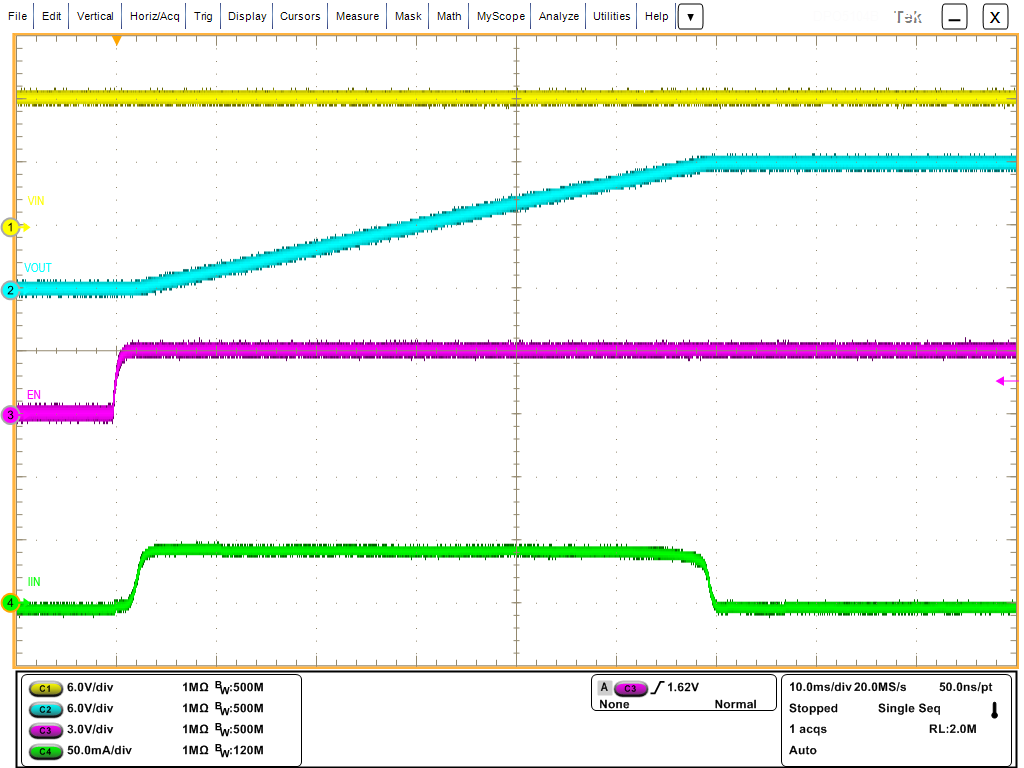SNOU173A October 2020 – December 2020 LM7310
5.1 Startup Test
Use the following instructions to measure the inrush current during startup event:
- Set Jumper J2 position to desired slew rate as mentioned in Table 4-3.
Pull EN/UVLO1 to GND to disable the device.
Set the input supply voltage VIN to 12 V and current limit of 10 A. Enable the power supply.
Release the EN/UVLO1 to GND connection.
- Observe the waveform at VOUT (TP7) and input current (using current probe) with an oscilloscope to measure the slew rate and rise time of the ideal diode with a given input voltage of 12 V.
Figure 5-2 shows an example of inrush current captured on the LM73100EVM.
 Figure 5-2 LM73100 Output Rise Profile (VIN = 12 V, CdVdT = 10 nF, COUT = 220 μF, No-Load)
Figure 5-2 LM73100 Output Rise Profile (VIN = 12 V, CdVdT = 10 nF, COUT = 220 μF, No-Load)